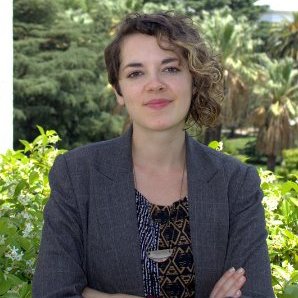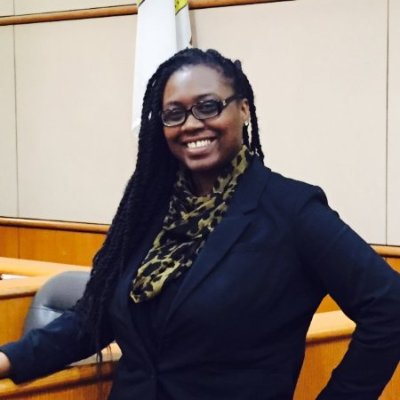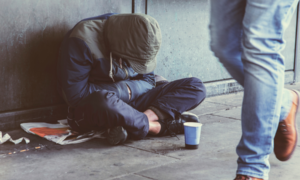WASHINGTON — They came from around the country to hear how other professionals are helping homeless youth climb toward stability, to share their own stories of programs that work and, despite a weather scare, to get a little lobbying done in the nation’s capital.
The National Summit on Youth Homelessness, held Monday and today, gave caregivers, policymakers, educators and advocates a chance to see what presenters called a holistic approach to helping end youth homelessness. The breakout session topics — covering everything from foster youth to helping homeless teens thrive in college to updates on federal and state legislative agendas — mirrored the experts’ calls for a diverse attack on the problem. The National Conference of State Legislatures estimates that 1.3 million youth are living on the street on any given night.
“None of this work is done in a vacuum. We’re looking for a whole healing process,” said Tara Linh Leaman of the Westchester County, New York Department of Social Services. “When you look at this chart, you can’t just focus on housing or employment or education or connections. These are all important parts to helping people gain independence.”
The gathering, sponsored by the National Network for Youth (NN4Y), was heavily weighted toward real-world examples of programs, data-intense studies and youth interactions that have proven to make a difference in the lives of homeless and vulnerable young people.
Westchester County, home to some of the nation’s wealthiest people and celebrities such as the Clintons and Martha Stewart, also has enclaves of deep poverty in Yonkers and elsewhere. Westchester Building Futures, a network of local providers, outlined an innovative program designed to help teenagers who have spent years in foster care transition to independence.
The Children’s Village of New York provides peer-to-peer counseling led by teens who were formerly homeless or who had been in foster care in what it calls the Brave Heart program.
Founded in 2013 with a federal grant, the program now has three full-time peer counselors serving as many as 200 youth, said Kaylene Quinones, who was helped by the program and now has a social worker’s degree and serves as a full-time counselor.
“Our people were in their shoes just a couple years ago, so they have unique talents as credible messengers,” said Warren Kent, the program director. “But they also come with the same baggage of being in the foster care system and all of the trauma that goes with that. It can be difficult, because as our peer mentors hear the stories, they can go through that all over again.
“Here is an example of how important the peer system can be,” Kent said. “Why does a homeless kid have to know what the longest train ride in New York is? Well, one day one of the people in our program started talking about the train ride, and our peer counselor knew immediately where to find the longest train. When you’re homeless, you’re looking for the longest route with no interruption, and they both knew that. It gave them an instant connection.”
[Related: Preventing Gang Violence By Offering a Community]
One of the best attended and most lively breakout sessions focused on initiatives, led by California, to help get homeless and at-risk youth into colleges, and to help them stay there.

Shahera Hyatt
Shahera Hyatt, director of the California Homeless Youth Project told the audience of new or pending legislation in her state that included priority enrollment for homeless teens, mandatory liaisons in public universities to directly assist youth in finding grants and aid, and state agencies being compelled to grant hiring preference to students facing homelessness or if they were formerly incarcerated.
“The choice of having to pay for food or books is a choice students should not have to make,” Hyatt said, before outlining programs that help students identify potential sources of money and grants that will help sustain them as they work toward their degree. “SNAP is actually economic stimulus, because that is money that people need and will spend locally.”
At the end of the session, audience members forwarded their best ideas to help homeless students. The most popular called for a percentage of all university sports tickets sold to be earmarked for programs that help homeless students. Another called for universities to designate at least one dorm to be opened during all school breaks and vacations, so that students without family support will still have a place to sleep.
With the conference just steps from the U.S. Capitol building, organizers also focused on legislative sessions. A snowstorm clogged much of D.C. this morning, forcing two legislative staffers to cancel their plans to speak to the group. The weather also disrupted some, but not all, meetings attendees had scheduled with legislative staff.

Eric Masten
But Eric Masten, policy director for NN4Y, stepped in. He spent four years on the staff of Sen. Patty Murray, D-Washington, and was able to provide a blueprint for effective lobbying efforts.
“A real goal of our meeting is to build relationships here in D.C., and with staff back in their home districts,” Masten said. “These meetings are absolutely critical, because you bring the voice of youth to the legislators, and let them know why these issues are so important. You have a chance to really inform the policies that the staff is writing, and nothing resonates more for staff than hearing directly from people like you.”

Niya Kelly
Niya Kelly, a policy specialist for the Chicago Coalition for the Homeless, said members can also serve as a valuable resource to lawmakers.
“It is important to let people know that staff and elected officials can come to us for help and information,” Kelly said. “It can’t always just be us asking for their help on a bill. It’s important to let them know that we have the expertise and the contacts to help get them information and facts they need to make decisions.”
More related articles:
Financial Aid Made Easier for Unaccompanied Homeless Youth
New Initiative Says Moment Is Now to End Youth Homelessness
Homeless Youth Count Turns Up Surprises in Atlanta
































